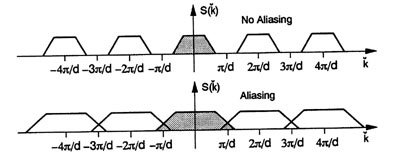Here are a few common artifacts that are typically found in various image and video compression applications.
Blurring Artifact
Blurring of an image refers to a smoothing of its details and edges, and it results from direct or indirect low-pass filter effects of various processing. Blurring of an object appears as though the object is out of focus.
Motion blur appears in the direction of motion corresponding to rapidly moving objects in a still image or a video. It happens when the image being recorded changes position (or the camera moves) during the recording of a single frame, because of either rapid movement of objects or long exposure of slow-moving objects. One way to avoid motion blur is by panning the camera to track the moving objects, so the object remains sharp but the background is blurred instead.
Block Boundary Artifact
Block-based lossy coding schemes, including all major video and image coding standards, introduce visible artifacts at the boundaries of pixel blocks at low bit rates. In block-based transform coding, a pixel block is transformed to frequency domain using discrete cosine transform or similar transforms, and a quantization process discards the high-frequency coefficients. The lower the bit rate, the more coarsely the block is quantized, producing blurry, low-resolution versions of the block.

The block boundary artifact is the result of independently quantizing the blocks of transform coefficients. Neighboring blocks quantize the coefficients separately, leading to discontinuities in the reconstructed block boundaries. These block-boundary discontinuities are usually visible, especially in the flat color regions such as the sky, faces, and so on, where there are little details to mask the discontinuity. Compression algorithms usually perform deblocking operations to smooth out the reconstructed block boundaries, particularly to use a reference frame that is free from this artifact.
Although the discontinuities may or may not align with the boundaries of macroblocks as defined in the video and image coding standards, macroblocking is a common term for this artifact. Other names include tiling, mosaicing, quilting, and checkerboarding.
Ringing Artifact
Ringing is unwanted oscillation of an output signal in response to a sudden change in the input. Image and video signals in digital data compression and processing are band limited. When they undergo frequency domain techniques such as Fourier, a spurious and visible ghosting or echo effect is produced near the sharp transitions or object contours. This is due to the well-known Gibb’s phenomenon—an oscillating behavior of the filter’s impulse response near discontinuities, in which the output takes higher value (overshoots) or lower value (undershoots) than the corresponding input values, with decreasing magnitude until a steady-state is reached.

Aliasing Artifacts
Let us consider a time-varying signal x(t) and its sampled version x(n) = x(nT), with sampling period T >0. When x(n) is downsampled by a factor of 2, every other sample is discarded. In the frequency (ω) domain, the Fourier transform of the signal X(ejω) is stretched by the same factor of 2. In doing so, the transformed signal can in general overlap with its shifted replicas. In case of such overlap, the original signal cannot be unambiguously recovered from its downsampled version, as the overlapped region represents two copies of the transformed signal at the same time. One of these copies is an alias, or replica of the other. This overlapping effect is called aliasing.

In general, aliasing refers to the artifact or distortion resulting from ambiguous reconstruction of signals from its samples. Aliasing can also occur in spatially sampled signals—for instance, digital images or videos—where it is referred to as spatial aliasing. Aliasing always occurs when actual signals with finite duration are sampled. This is because the frequency content of these functions has no upper bound, causing their Fourier transform representation to always overlap with other transformed functions.
Jaggies
Popularly known as jaggies, this common form of aliasing artifact produces visible stairlike lines where there should be smooth straight lines or curves in a digital image. These stairs or steps are a consequence of the regular, square layout of a pixel. With increasing image resolution, this artifact becomes less visible. Also, anti-aliasing filters are useful in reducing the visibility of the aliased edges, while sharpening increases such visibility.

Moiré Pattern
Due to undersampling of a fine regular pattern, a special case of aliasing occurs in the form of moiré patterns. It is an undesired artifact of images produced by various digital imaging and computer graphics techniques—for example, ray tracing a checkered surface. The moiré effect is the visual perception of a distinctly different third pattern, which is caused by inexact superposition of two similar patterns.

Flickering Artifacts
Flicker is perceivable interruption in brightness for a sufficiently long time (e.g., around 100 milliseconds) during display of a video. It is a flashing effect that is displeasing to the eye.
Jerkiness
A flicker-like artifact, jerkiness (also known as choppiness), describes the perception of individual still images in a motion picture. It may be noted that the frequency at which flicker and jerkiness are perceived is dependent upon many conditions, including ambient lighting conditions. Jerkiness is not discernible for normal playback of video at typical frame rates of 24 frames per second or above. However, in visual communication systems, if a video frame is dropped by the decoder owing to its late arrival, or if the decoding is unsuccessful owing to network errors, the previous frame would continue to be displayed. Upon successful decoding of the next error-free frame, the scene on the display would suddenly be updated. This would cause a visible jerkiness artifact.
